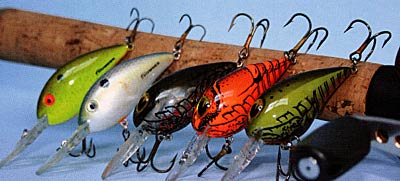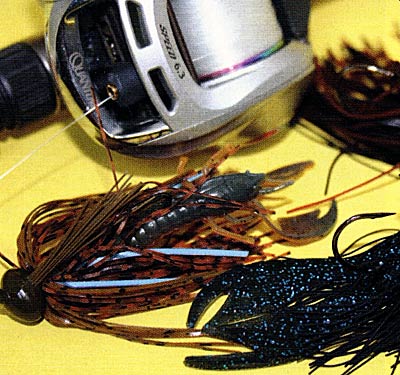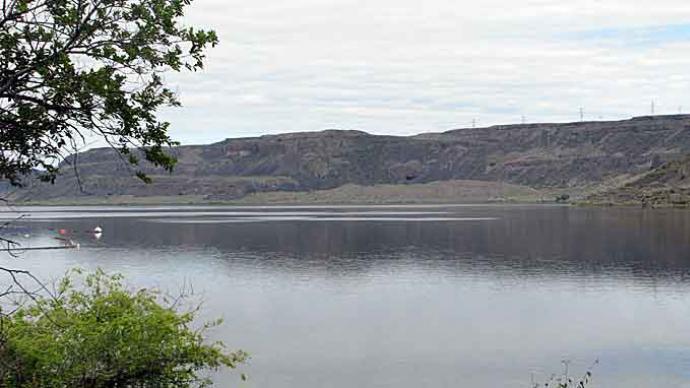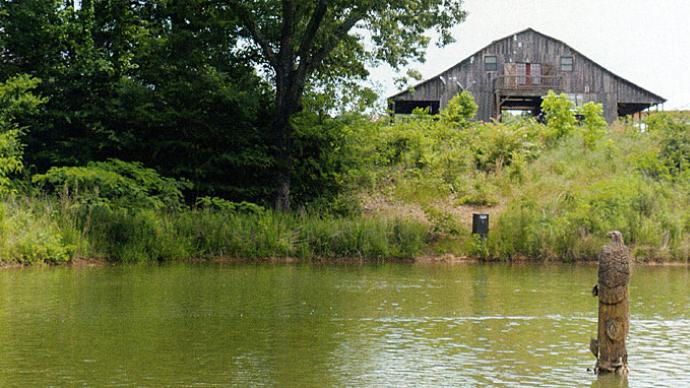
How about this email question from long time subscriber John Mehling, from Indiana? "Bob could you do an article on fishing a lake that is aerated? I know when a lake is stratified fish will be close to the thermocline where they can be cool plus have oxygen. So how would you fish a lake that has oxygen from top to bottom and temperature pretty close top to bottom?"
Good idea. Let's tackle that topic, so to speak.
It's similar to fishing any lake, except there's way more vertical water to fish.
The concept of pond aeration is relatively new, compared to the overall pond management industry. Aeration came across a common boundary, wastewater treatment. The working theory is moving water to cleanse it. For recreational fishing ponds, the aeration focus has mostly been on moving water vertically to create a predictable, autonomous column of stable water quality and chemistry. By doing so, an autonomous water column offers a stable environment and media to encourage a healthy biological ecosystem. For the most part, that theory is reality.
In summer, try to catch fish similar to how you'd fish in winter, with a few exceptions. In hot water, fish are more likely to orient to structure and habitat. Find them and then figure out how to make them react to your bait.
In nature, water begins to stratify sometime in May in most of the United States. As days become longer and the Earth tilts on its axis, we benefit from warmer days. More sunlight sends heat into our ponds. But that heat is going to rise as the water warms. Warm water is less dense, so it weighs less. Cooler, heavier water stays toward the bottom and inevitably your pond forms a layer cake effect, divided by a thermocline. That cooler, denser layer doesn't communicate with the atmosphere and loses its oxygen supply by natural processes of the deep. The warm layer is where all the fish and plants live and thrive. Plants respond to temperature changes, while fish seek their favorite temperatures. As we move further from spring into summer, all kinds of biological magic are happening in each of the two layers. Those two layers couldn't be further apart biologically, even though they are only separated by a few inches.

Aeration changes all that. Depending on aeration system type, from passive to aggressive, the thermocline can be pushed further downward or eliminated completely.
But, as John asked, "How do you fish an aerated lake?"
Put yourself in the fish's shoes.
Where would you go, where would you live, how would you eat? How would you keep from being eaten?
That's where we get back into the theory part of the equation. Several facts come into play.
Cold-blooded fish first seek their perfect temperature. That temperature hinges on circumstances and the species. In spring, right now, most fish are either spawning, preparing to spawn, or have recently finished. Laws of Nature offers a range of temperatures for each species, to keep those species pure. Once the spawn finishes, fish still continue to seek their perfect temperatures. Here's what's most important to understand about this concept. Temperature is more important than how much oxygen is present, or even how much food is present. As an angler, you need to know that.
When a lake or pond is aerated with bottom diffused aeration, there are several things at play. Those cascading bubble plumes pull bottom water to the top in a mushroom-formation, allowing methodical vertical movement of water to commingle with the environment for exchange of gases and influence from atmospheric temperature.
That means the water will be the same temperature throughout the water column. If that's your fish's perfect temperature, they'll be happy—and probably dispersed randomly, unless you have perfect habitat throughout the water column.
I'll always remember a trip to Ray Scott's famous President's Lake south of Montgomery, Alabama, probably 20-plus years ago. He'd invented, tweaked, and tinkered with a device he named, "Lake-Life Pump." It was a cylindrical device about twice as big around as a 55-gallon barrel with an electric motor on top that slowly turned a fan inside the barrel. The fan, similar-looking to an industrial fan you might see in an old-time gym, gently pushed surface water downward. Ray had at least four of those devices scattered around the lake.
From his boat on this steamy July day, he tossed a shaky-head jig directly at the device, hit the side of it, and then counted down as his bait sank. When it hit the bottom, he gave it two or three twitches, hooked into a two-pound bass, and quickly had it in the boat.
I sat there, stunned.
No one throws jigs in summer. No one fishes the deepest water of a private lake in July.
Ray caught five bass on back to back to back casts.
My mind was digesting what had just happened. Those bass sat immediately beneath that device, in twenty-two feet of water, a foot off the bottom, in the middle of an Alabama July day.
Because they could. Something was attractive.
We went to two other devices, in shallower water, passively shoving water into the depths. Nothing. Not one bite.
We shifted to deep-diving crankbaits and caught a few bass randomly, no where near any structure or cover, in a lake loaded with structure and cover.
In lakes with more aggressive aeration, especially bottom diffused aeration, fish are often attracted to the bubble plumes. Or, it should be said that game fish are attracted to the baitfish that are attracted to the bubble plumes. I can't tell you how many times I'll run an electrofishing boat across a bubble plume, only to see literally thousands of threadfin shad boil. Right beneath them, we'll soon see as many as twenty bass, usually a pound to two pounds, coming up slowly. Then, there are times we'll roll across a bubble plume, even the same ones, and nothing comes up.
When a lake is aerated, fish have more area of the lake in which to live. The good news is that fish have much more room to live, move around, and feed. The bad news is that fish have more room to live, move around, and feed.
From a biology standpoint, we need to understand how important it is that fish try to seek their perfect temperature during the extreme months. That should influence aeration strategy, which then influences fish behavior.
Take the time to monitor oxygen levels if you have an oxygen meter. Also, check the temperature in one-foot increments all the way to the bottom. Most aerated lakes have autonomous temperature top to bottom.
When it's time to fish that aerated lake, it's not totally different than fishing one that's not aerated. Find the fish and figure out what it takes to make them eat your offering. Yes, they'll still feed, usually every day, sometimes more than once. Base your fishing style on the temperature. Just know they are likely to be deep during much of the day. If the fish are least-stressed because their water is happy, your catch rates should go up.
Reprinted with permission from Pond Boss Magazine




